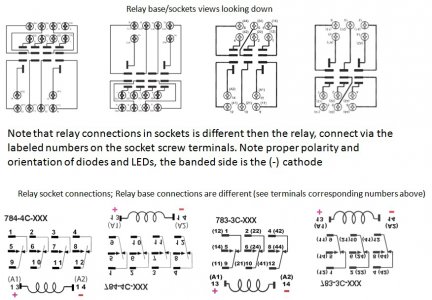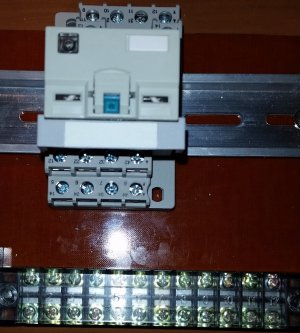- Joined
- Jun 12, 2014
- Messages
- 4,810
Hi Tino,
You need to set the VFD settings based on the motor nameplate, not the line in. So if you were sent a Leeson Metric 3 phase 60Hz motor at 230V, then that is the base frequency and motor voltage (also check the RPM and Amperage). You can also run an auto-tune to get additional motor parameters.
If you have a separate 24V power source for the power indicator light, then you need a separate switch or relay to connect it. You cannot use two power supplies in the same circuit if I understand your description. You can use the 24VAC transformer for the machine work light.
So you need to wire the relay in accordance with the socket base diagram, not the relay diagram, as the location of the connections are different.




You need to set the VFD settings based on the motor nameplate, not the line in. So if you were sent a Leeson Metric 3 phase 60Hz motor at 230V, then that is the base frequency and motor voltage (also check the RPM and Amperage). You can also run an auto-tune to get additional motor parameters.
If you have a separate 24V power source for the power indicator light, then you need a separate switch or relay to connect it. You cannot use two power supplies in the same circuit if I understand your description. You can use the 24VAC transformer for the machine work light.
So you need to wire the relay in accordance with the socket base diagram, not the relay diagram, as the location of the connections are different.






